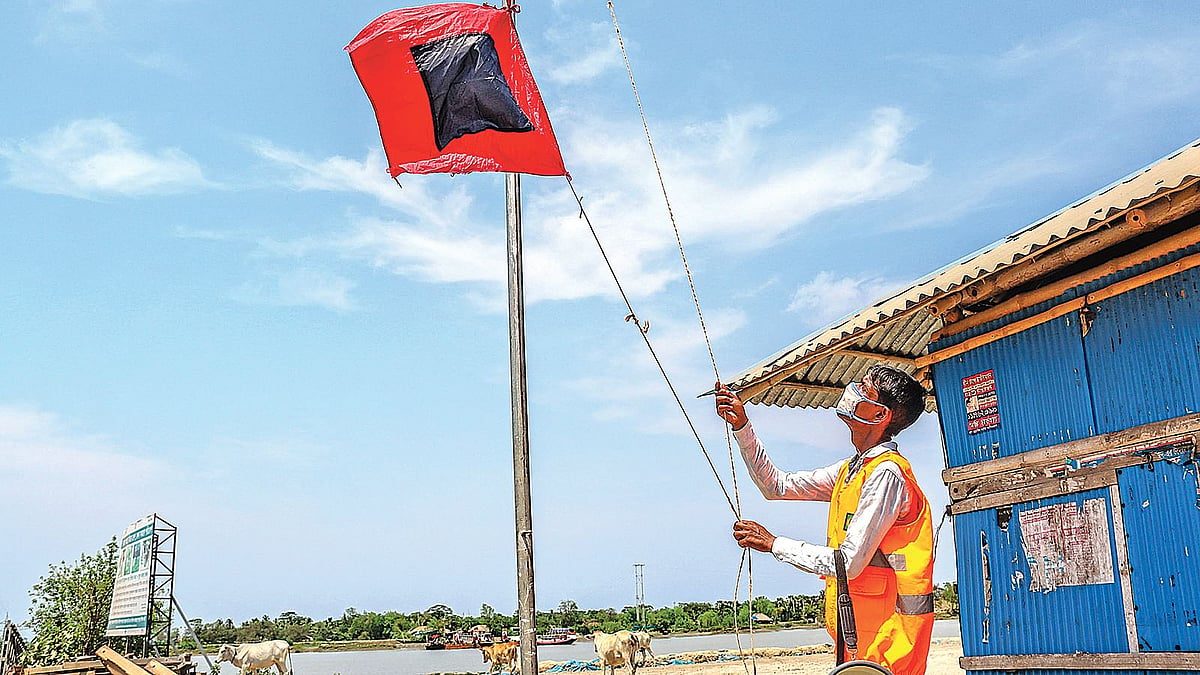
Disasters are currently hitting Bangladesh at a higher number than in the past, according to the State-run National Institute of Preventive and Social Medicine (NIPSOM).
NIPSOM recently released a research report on the damage caused by storms in the country between 1582 and 2020.
However, the Global Climate Risk Index 2021 report of German Watch, a Germany-based non-government organisation, said Bangladesh made a progress in the list of disaster-prone countries.
It shows a total of 61 cyclones devastated the country between 1582 and 2020. That means Bangladesh has faced a major cyclone in every 6 years and 4 months during this period.
Some 27 cyclones ravaged the country between 1970 and 2020 indicating that a major storm swept across the country in every one year and 10 months.
The Global Climate Risk Index 2021 report of German Watch has highlighted Bangladesh’s achievement on reducing damages caused by disasters.
It said Bangladesh is particularly vulnerable to tropical cyclones. However, a dense network of small cyclone shelters, early warning systems, evacuation plans, reforestation schemes and increased communication have contributed to reducing cyclone-related mortality.
According to the report, about 500,000 people died in the catastrophic cyclone on 12 November 1970. Some 4,234 people died in another devastating cyclone Sidr in 2007. Lastly, 26 people died in cyclone Amphan.
The Climate Risk Index 2021 shows Bangladesh ranks 13th in the list of climate risk, 29th in the fatalities per 100,000 inhabitants and 20th in financial damages as per the data of 2019.
The index also highlighted a scenario between 2000 and 2019 and Bangladesh ranks 7th in the disaster risk. Some 572 people, on average, died every year. And the country suffered from financial damages worth USD1.86 billion or Tk 158 billion (15,800 crore). Puerto Rico, Myanmar, Haiti, Philippines, Mozambique, The Bahamas, Bangladesh, Pakistan, Thailand and Nepal were the 10 countries most affected during this time.
This month, United Nations Development Programme has released an analysis report on the disaster management in Bangladesh. The government of the newly-born Bangladesh started a cyclone preparedness pogramme in 1972 following the 1970 cyclone. A cyclone forecasting system was developed in the coastal districts with the assistance of international agency Red Cross. Some 50,000 volunteers were trained and provided with rescue kits to bring the coastal people to shelter centres.
The report further said Bangladesh has built 8,200 killomitres of flood control dams and 3,400 kilomitres of coastal embankments. About 2,000 cyclone shelter centres and 200 flood shelter centres have been built. But fault remains in regular maintenance and management of these infrastructures.
Bangladesh shows better progress on the reduction of damage caused by the disaster, said Arif Abdullah Khan, disaster resilience programme specialist of UNDP.
He told Prothom Alo that previously relief was given only as part of the programme to fight disaster globally. Then the issue of risk reduction comes. But nowadays it is being told that arrangement will have to be made so that people can get back to the condition as they were in the pre-disaster times.
Regarding earthquake, the UNDP report said, at least 376,000 buildings will collapse if a 7-magnitude earthquake strikes Dhaka, Chattogram and Sylhet. Thousands of people will die. If such buildings collapse, Bangladesh doesn’t have the capacity to remove the rubbles and rescue the affected people.
Speaking to Prothom Alo on the preparedness, state minister for disaster management and relief Enamur Rahman said, “We have prepared 36,000 volunteers to face earthquake. They will be trained now. Two locations in Narayanganj and Gazipur will be prepared for treating the people affected by earthquake.”
The National Disaster Preparedness Day is Wednesday. The government has been observing the day since 1997. This year, the day will be observed later. People concerned said Bangladesh had a big lesson from the devastation of the 1970 cyclone. After that, many preparations have been taken to tackle cyclone.
Preparation to tackle the damage of any possible earthquake will have to be taken now.
BRAC University emeritus professor Ainun Nishat told Prothom Alo, “Taking big initiative is necessary on how we will rescue people and save their lives, if a major earthquake strikes. We have to think anew on the construction of flood shelter centre.”
*This report appeared in the print and online editions of Prothom Alo and has been rewritten in English by Hasanul Banna